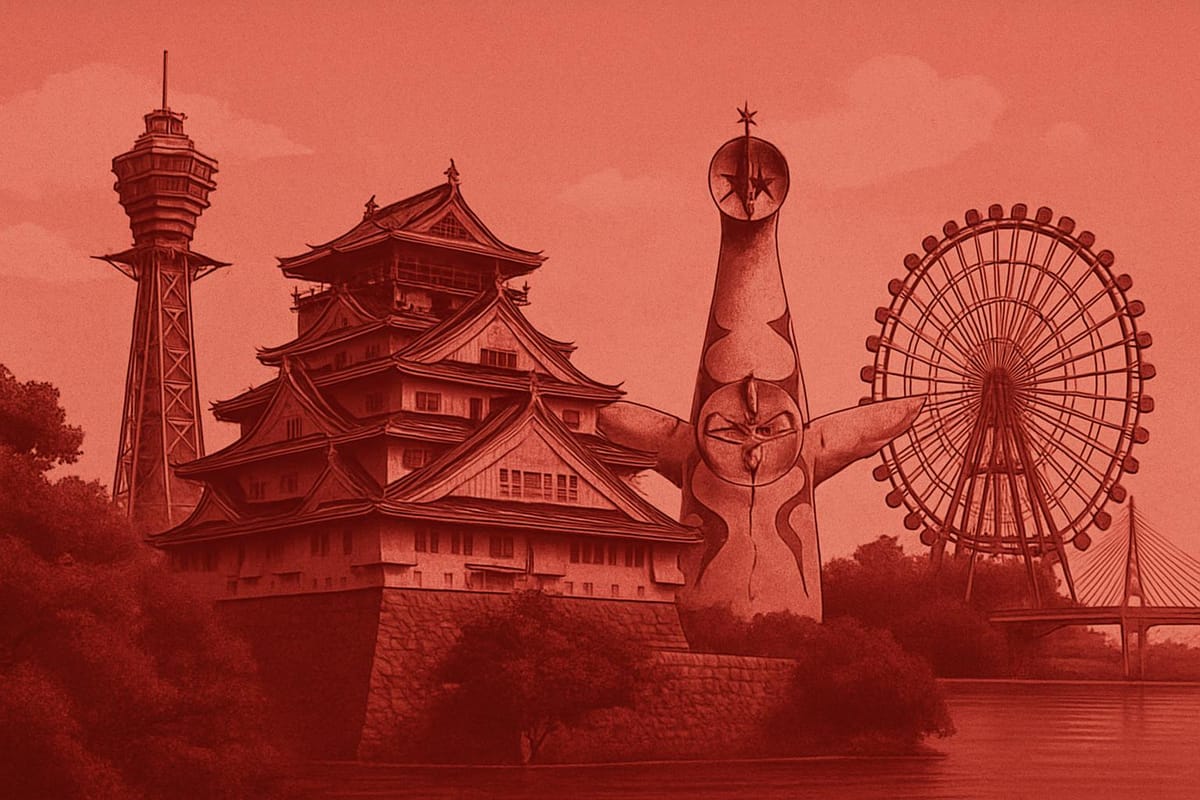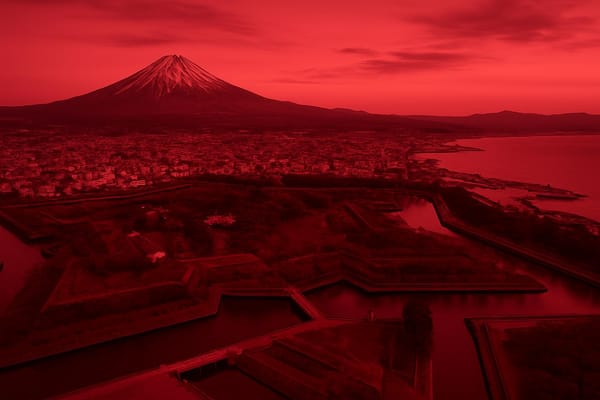Osaka
Discover iconic castles, legendary street food, vibrant nightlife & shopping for foodie adventures

Important things to know about Osaka
Osaka, Japan is a dynamic metropolitan center where tradition and modern urban life blend into a distinctive local identity; the city of Osaka stands out in the Kansai region for its energetic streets, diverse neighborhoods, and a vibrant everyday culture that balances bustling commerce with warm, approachable communities. As Japan’s third-largest city, Osaka city is a powerhouse of commerce, manufacturing, and innovation, hosting a wide range of small family businesses, startups, and established corporations that drive both the regional and national economy, while a dense transportation network of trains and subways makes commuting and intercity connections efficient and integral to daily life. Residents take pride in an approachable civic character shaped by the Kansai dialect and a strong sense of local identity, visible in community festivals, neighborhood markets, and business practices that emphasize hospitality and practicality. The urban fabric mixes high-rise office districts with intimate residential lanes, offering varied lifestyles from late-night business hubs to quiet riverside promenades, and the culinary culture-known for its bold flavors and street food culture-infuses social life with casual dining and food-centric gatherings that reflect Osaka’s role as a gastronomic heartland in Japan. Green spaces, rivers, and coastal areas provide seasonal contrast to the metropolitan core, while cultural institutions, educational centers, and research facilities contribute to a thriving knowledge economy and creative scene. Whether considered for study, work, or living, Osaka, Japan presents an accessible, energetic, and resilient urban environment that resonates with both tradition and contemporary aspirations.
Sightseeing hot-spots in Osaka
Osaka sightseeing highlights begin with the city's deep blend of history and energy, where Osaka Castle stands as the emblematic heart. Nestled in a broad park with seasonal cherry blossoms and tranquil moats, the castle offers a museum full of samurai artifacts and panoramic views from its observation deck that capture both old and new Osaka. Strolling the surrounding gardens and promenades gives a sense of why sightseeing in Osaka appeals to travelers seeking culture, photo opportunities, and a taste of Japan’s feudal past right next to modern city life.
Beyond history, Osaka is famous for its vibrant street life and food culture, with Dotonbori serving as the neon-lit epicenter of entertainment and culinary delights. Bright signboards, the iconic Glico running man, and riverside walkways create an unforgettable nightscape while nearby alleys showcase must-try treats like takoyaki and okonomiyaki. Shinsaibashi offers extensive shopping, and the retro charm of Shinsekai with Tsutenkaku Tower introduces a different, nostalgic side of the city. For family-friendly excitement, Universal Studios Japan draws crowds with world-class rides and seasonal events, making it one of the top Osaka attractions.
Modern architecture and elevated viewpoints complete the sightseeing in Osaka experience, with the futuristic Umeda Sky Building providing a dramatic floating observatory and romantic sunset vistas. River cruises and night boat tours highlight the city lights, while compact neighborhoods and efficient transport make it easy to combine cultural sites, culinary adventures, and entertainment in one trip. Whether you’re planning a weekend escape or extended Osaka travel, these sightseeing highlights capture the city’s dynamic spirit and ensure memorable discoveries at every turn.
Hotels to enjoy in Osaka
Osaka is a vibrant city where hotels in Osaka range from sleek skyscraper properties in Umeda to colorful boutique stays near Dotonbori and lively hostels around Namba, offering an ideal base for exploring famous attractions like Osaka Castle, Universal Studios Japan and the lively Kuromon Market. Travelers looking for business conveniences will find well-equipped rooms near Shin-Osaka station with easy shinkansen access, while those seeking a more relaxed experience can choose waterfront luxury around Osaka Bay. With options spanning budget capsule hotels to high-end luxury chains, visitors can select accommodations tailored to romantic getaways, family trips, or solo adventures. Many hotels feature multilingual staff, on-site dining, compact workspaces and complimentary Wi-Fi, ensuring both comfort and convenience during your Osaka stay.
When planning to book, comparing rates and reading recent reviews helps secure the best Osaka hotel deals and discover hidden gems that match your travel style; searching for the best hotels in Osaka by neighborhood or amenities such as onsen, family rooms, or airport shuttle service can significantly improve your trip. For families, look for child-friendly services and proximity to transport hubs, while food lovers may prioritize stays within walking distance of Dotonbori’s street food scene. Whether your priority is nightlife, shopping, culture or ease of transport, the breadth of Osaka accommodation ensures something for every traveler, and timely reservations during peak seasons will make it easier to lock in the perfect hotel for an unforgettable Osaka experience.
Restaurants to try in Osaka
Osaka restaurants offer an irresistible mix of street food energy and refined dining experiences, making the city a must-visit for anyone who loves Japanese cuisine. From the neon-lit canals of Dotonbori to quieter neighbourhood lanes, the Osaka food scene balances the casual joy of takoyaki and okonomiyaki with the precision of sushi counters and kaiseki ryōtei. Travelers seeking the best restaurants in Osaka can find Michelin-starred tasting menus and humble stalls alike; the local culture of kuidaore - eating until you drop - means you'll discover flavors packed with umami on every corner. Whether you’re drawn to late-night izakaya hopping, ramen shops that perfect your broth, or elegant modern kitchens reinterpreting traditional ingredients, Osaka delivers an authentic culinary journey through both popular and hidden gems.
Beyond signature dishes, Osaka dining is shaped by seasonal produce and a welcoming service style that emphasizes sharing and local craft. Food lovers exploring Osaka restaurants will appreciate how chefs and vendors showcase regional seafood, grilled skewers like kushikatsu, and inventive desserts that nod to both heritage and innovation. The city's compact layout makes it easy to experience diverse menus in a single evening, and many visitors find that the best memories are made sampling a variety of tastes rather than following a rigid itinerary. For searchers looking for vibrant Osaka dining recommendations, this city remains a top destination in Japan where tradition and modern culinary creativity meet, promising memorable meals for every palate.
Best shopping stops in Osaka
Osaka is a vibrant mecca for shopping in Osaka, where neon-lit streets meet centuries-old markets. Strolling through Dotonbori and the bustling Shinsaibashi-suji arcade, visitors will find everything from global luxury brands to quirky local boutiques, making Osaka shopping an irresistible mix of high fashion and street-style treasures. Nearby Namba hums with department stores and specialty shops, while Amerikamura offers edgy indie fashion and vintage finds that attract trendsetters. For food lovers, Kuromon Market is a must for fresh seafood, takoyaki, wagashi and Japanese souvenirs that showcase regional flavors. Those hunting for electronics and otaku culture will want to explore Den Den Town, where gadgets, anime collectibles and retro games pack the shelves. With abundant tax-free options and seasonal sales, shopping in Osaka caters to every budget and taste.
Beyond the streets, Osaka’s grand department stores like Hankyu, Takashimaya and Daimaru provide luxurious shopping experiences with impressive food halls - known as depachika - that offer gourmet treats and gift-worthy packaging. Shoppers can also discover bargains in outlet malls and secondhand stores, or wander the long, vibrant lanes of Tenjinbashi-suji, the city’s longest shopping street, for a truly local vibe. Practical tips enhance the experience: carry your passport for tax-free purchases, arrive early for fresh market picks, and leave room in your luggage for delicate ceramics, artisanal knives and skincare products that make perfect gifts. Whether seeking cutting-edge fashion, traditional crafts, electronics or unforgettable street food, Osaka shopping promises a dynamic blend of modernity and tradition that keeps visitors coming back.
Nightlife highlights in Osaka
Osaka nightlife pulses with neon energy and irresistible flavors, starting in the iconic Dotonbori corridor where the river reflects towering signs and animated crowds. Wander from buzzing Namba streets into narrow alleys of cozy izakaya and ramen stalls, sampling late-night street food like takoyaki and kushikatsu while the city hums with laughter. For travelers seeking variety, rooftop bars and stylish lounges in Umeda offer cocktail views and a more relaxed vibe, while the dense network of entertainment arcades, pachinko parlors, and karaoke boxes promise hours of fun. Photographers and foodies alike will find endless chances to capture Osaka’s vibrant nighttime character.
When the hour grows later, Osaka’s club scene and live music venues come alive, attracting DJs and artists who keep the tempo high until dawn. Those in search of local culture can enjoy traditional performances or intimate jazz bars, where the soundscape shifts from electronic beats to sultry acoustic sets. With efficient late-night transport and friendly crowds, exploring Osaka nightlife feels effortless and safe, making it a top destination for a memorable night out in Japan. Whether you’re bar-hopping, dancing, or savoring street snacks, Osaka delivers an unforgettable after-dark experience.
Getting around in Osaka
The current airport and train situation of Osaka balances international access with efficient local transit, making travel seamless for tourists and business travelers alike: Kansai International Airport (KIX) serves as the main international gateway with the Haruka limited express and the distinctive Rapi:t service running to central hubs, while the nearby Itami (ITM) handles most domestic flights and is well connected by airport limousine buses and quick transfers to Osaka Metro and regional rail. On the rail side, JR West provides fast connections from Shin-Osaka-the city's Shinkansen station-linking travelers to Tokyo and beyond, and private railways like Nankai, Hankyu, and Hanshin offer frequent services to key districts such as Namba and Umeda, as well as easy onward travel to Kyoto, Kobe, and Nara. Frequent metro lines and integrated IC cards simplify transfers, while station facilities, luggage services, and multilingual signage improve accessibility; peak-hour trains are busy but punctual, and recent infrastructure upgrades continue to enhance capacity and traveler convenience, making Osaka’s airport and train network a reliable backbone for regional tourism and commerce.
Culture must-see's in Osaka
Osaka, Japan brims with cultural energy that blends the traditional and the modern, making it a top destination for travelers seeking authentic Osaka culture experiences. Wander through the neon-lit streets of Dotonbori and Namba to taste the city's world-famous street food-from piping hot takoyaki to savory okonomiyaki-while neon signs and canal reflections create an unforgettable urban backdrop. Historic landmarks like Osaka Castle and nearby shrines offer a quieter counterpoint, where seasonal cherry blossoms and tranquil gardens reveal centuries of local history. The city's neighborhoods, from bustling Umeda to nostalgic Tennoji, provide a variety of shopping, dining, and cultural hotspots that showcase why Osaka, Japan is renowned both for its friendly locals and its dynamic culinary scene.
Beyond food and landmarks, Osaka’s performing arts and festivals are central to its cultural identity. The city is a proud home for traditional theater such as bunraku puppet performance and kabuki, as well as contemporary music venues and art museums that celebrate Kansai creativity. Annual events and vibrant matsuri bring together communities with parades, music, and street celebrations, reflecting deep-rooted traditions alongside modern entertainment. For anyone researching things to do in Osaka, the blend of historic temples, innovative museums, and lively night districts makes the city a must-see in Japan, offering rich cultural highlights that satisfy history lovers, foodies, and art enthusiasts alike.
History of Osaka
Osaka's long and layered past begins with Naniwa, the ancient port that served as a political and commercial gateway to the Japanese archipelago. From the 5th to 8th centuries, Naniwa functioned as a center for diplomacy and trade with the Asian mainland, laying the groundwork for Osaka’s enduring role as a hub of exchange. During the medieval and Sengoku periods the city’s strategic importance intensified, culminating in the construction of Osaka Castle by Toyotomi Hideyoshi in the late 16th century - a symbol of unification and military power whose legacy shaped national politics. In the Edo period Osaka evolved into the merchant capital of Japan, often called the “kitchen of the nation” for its role in rice distribution and inland trade; wealthy merchants fostered a vibrant urban culture, patronizing theater, literature, and commerce and creating a distinct civic identity that contrasted with the samurai-dominated capitals of Kyoto and Edo (Tokyo). This era built the foundations of Osaka’s commercial savvy, civic institutions, and popular culture, producing a city that combined mercantile energy with an appetite for the arts and everyday pleasures.
The modern era accelerated Osaka’s transformation into an industrial and economic powerhouse within the Kansai region and all of Japan, as Meiji-era modernization brought factories, railways, and new civic infrastructure. The city played a central role in Japan’s industrialization with textile mills, shipyards, and heavy industry that powered growth into the 20th century, though the devastation of World War II required extensive postwar reconstruction and renewal. Landmark developments such as Expo '70, the dramatic rebirth of urban districts like Dotonbori and Umeda, and infrastructural projects including Kansai International Airport helped reposition Osaka as both a business center and a global destination. Today Osaka mixes cutting-edge commerce and finance with a celebrated food culture - takoyaki, okonomiyaki and vibrant nightlife - and maintains cultural traditions like the Tenjin Matsuri. As a city that has repeatedly rebuilt itself while preserving a distinctive, pragmatic spirit of entrepreneurship and hospitality, Osaka’s history continues to attract historians, tourists, and businesses seeking the dynamism that has defined this enduring Japanese metropolis.



